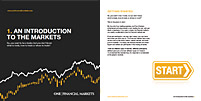

Asia FX edges lower as dollar steadies after two-day drop
Investing.com-- Most Asian currencies fell slightly on Wednesday with markets remaining risk averse ahead of key economic readings this week, while the dollar steadied after steep losses in the past two sessions.
Weak job openings and consumer confidence data saw the dollar pull back sharply from a near three-month high on Tuesday, as markets bet that the Federal Reserve will have limited economic headroom to keep raising interest rates.
But a string of U.S. and Chinese economic readings are due in the coming weeks, keeping traders largely averse to making big bets ahead of more cues on the world’s largest economies.
This notion weighed particularly on risk-heavy Asian currencies, with most regional units slipping back into negative territory on Wednesday. The Chinese yuan fell 0.2% ahead of key purchasing managers’ index (PMI) data on Thursday, while the Japanese yen shed 0.2% with retail sales and industrial production readings on tap.
Bank of Japan board member Naoki Tamura said that the bank could consider ending its ultra-dovish policy by early-2024, given that inflation has remained comfortably above its target range for nearly a year. Such a scenario bodes well for the yen, which was trading near nine-month lows on a widening gulf between local and U.S. interest rates.
The Singapore dollar fell 0.1%, while the Indian rupee fell 0.2%, with a reading on Indian economic growth due on Thursday. The South Korean won also lost 0.2%, with industrial production data due on Thursday.
Australian dollar slides on weak CPI
The Australian dollar was among the worst performers in Asia on Wednesday, falling as much as 0.5% after consumer price index (CPI) inflation data read weaker than expected for July.
Easing inflation gives the Reserve Bank of Australia (RBA) less impetus to keep raising interest rates, which in turn makes the Aussie appear less attractive. The bank hiked rates by a cumulative 400 basis points over the past year, as it moved to curb sticky inflation.
Other economic readings also showed that Australia’s economy was cooling along with inflation, with building approvals down more than expected in July.
Dollar steadies with data deluge on tap
The dollar index and dollar index futures rose 0.1% each in Asian trade, recovering marginally from a 0.5% tumble in the prior session.
More U.S. economic data is on tap this week, with a revised reading on second quarter economic growth due later on Wednesday. Personal consumption expenditures (PCE), the Fed’s preferred inflation gauge, is due on Thursday, while August nonfarm payrolls data is due on Friday.
Any signs of cooling U.S. inflation and labor activity points to the Fed having less headroom to keep raising interest rates. But given that the bank is expected to keep rates higher for longer, Asian currencies are expected to see little relief in the near-term.
Begin trading today! Create an account by completing our form
Privacy Notice
At One Financial Markets we are committed to safeguarding your privacy.
Please see our Privacy Policy for details about what information is collected from you and why it is collected. We do not sell your information or use it other than as described in the Policy.
Please note that it is in our legitimate business interest to send you certain marketing emails from time to time. However, if you would prefer not to receive these you can opt-out by ticking the box below.
Alternatively, you can use the unsubscribe link at the bottom of the Demo account confirmation email or any subsequent emails we send.
By completing the form and downloading the platform you agree with the use of your personal information as detailed in the Policy.






